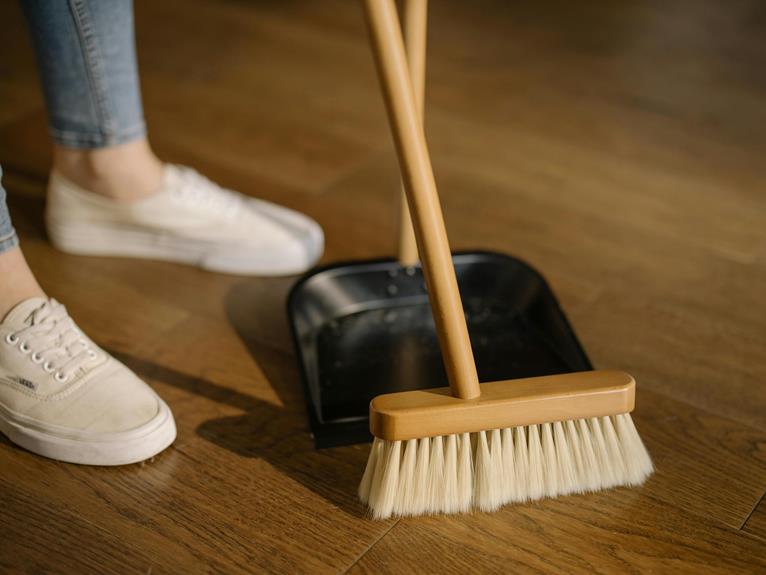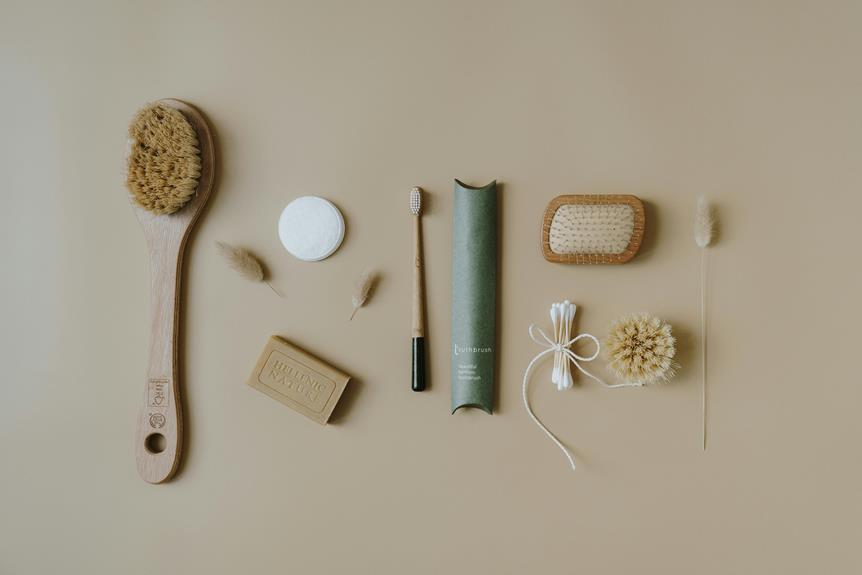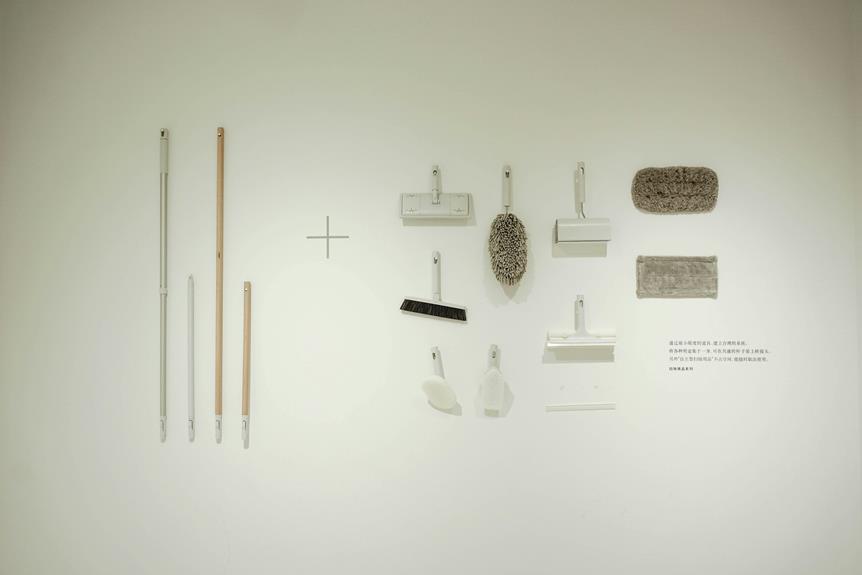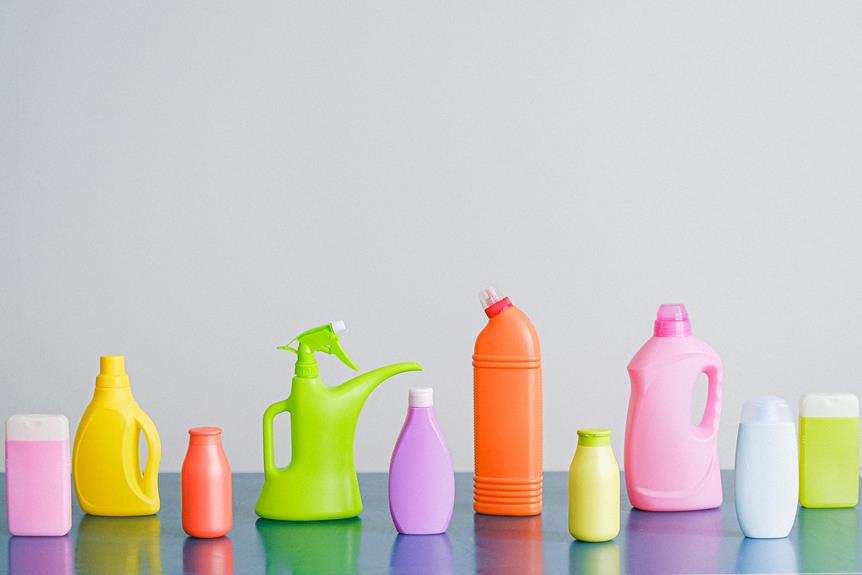As I opened the windows to let in the fresh spring breeze, I couldn’t help but notice the layer of dust that had accumulated on the furniture. It was a clear reminder that it was time for my annual seasonal cleaning. While it may seem like a tedious task, taking the time to thoroughly clean and organize your home can have a significant impact on your health and well-being.
Seasonal cleaning is important because it helps prevent allergies and asthma, improves indoor air quality, and promotes a clean and inviting living space.
One of the key reasons why seasonal cleaning is important is its ability to prevent allergies and asthma. Over time, dust, pollen, pet dander, and other allergens can build up in our homes, triggering allergic reactions and respiratory issues. By regularly cleaning and removing these allergens, we can create a healthier environment for ourselves and our families.
In addition to preventing allergies, seasonal cleaning also improves indoor air quality. Indoor air can be more polluted than outdoor air, especially when our homes are filled with dust, mold, and other pollutants. By thoroughly cleaning our homes, we can reduce the presence of these harmful particles and breathe cleaner air, which is especially important for those with respiratory conditions or sensitivities.
Furthermore, seasonal cleaning promotes a clean and inviting living space. A cluttered and disorganized home can contribute to feelings of stress and anxiety, while a clean and organized space can promote relaxation and peace of mind. When we take the time to declutter, dust, and rearrange our belongings, we create a more pleasant living environment.
To effectively tackle seasonal cleaning, start by creating a cleaning checklist and breaking down the tasks into manageable chunks. Dust and vacuum thoroughly, paying attention to often overlooked areas like ceiling fans, baseboards, and under furniture. Clean windows and screens to let in more natural light and fresh air. Don’t forget to organize and declutter, getting rid of items that no longer serve a purpose.
In conclusion, seasonal cleaning is not just about aesthetics, but about creating a healthy and comfortable living environment. By preventing allergies and asthma, improving indoor air quality, and promoting cleanliness, seasonal cleaning plays a vital role in maintaining our overall well-being. So, roll up your sleeves, open those windows, and embrace the transformative power of a thorough seasonal cleaning. Your home and your health will thank you.
Benefits of Seasonal Cleaning
Seasonal cleaning offers numerous benefits that contribute to a healthier and more enjoyable living environment. One major advantage is the opportunity for deep cleaning. By thoroughly cleaning and disinfecting our homes during seasonal cleaning, we can eliminate accumulated dirt, dust, and allergens. This not only promotes a healthier space for ourselves and our families but also helps to create a sense of cleanliness and order.
Decluttering is another significant benefit of seasonal cleaning. Clutter can create stress and anxiety, making it difficult to relax and fully enjoy our living spaces. By taking the time to declutter, we can create a more organized and peaceful home. Letting go of items we no longer need or use allows us to make space for the things that truly matter to us.
Organizing is also a key advantage of seasonal cleaning. When we take the time to organize our belongings, we can easily find what we need, saving time and reducing frustration. An organized home allows us to function more efficiently and gives us a sense of pride and accomplishment. Knowing that everything has its place contributes to a more harmonious living environment.
Engaging in seasonal cleaning not only improves the physical aspects of our homes but also enhances our overall well-being. It provides us with a sense of cleanliness, order, and comfort. By deep cleaning, decluttering, and organizing, we create a space where we can feel at peace and truly belong.
Preventing Allergies and Asthma
To prevent allergies and asthma, it’s important to maintain a clean and allergen-free living environment. By improving indoor air quality, we can effectively reduce the risk of respiratory issues.
Allergens such as dust mites, pet dander, pollen, and mold spores can trigger allergies and asthma symptoms, so it’s crucial to eliminate them from our homes. Regular cleaning is key to removing these allergens and preventing respiratory problems. Dusting surfaces, vacuuming carpets, and washing bedding regularly will help get rid of dust mites and pet dander. It’s also important to clean air vents and change filters in heating and cooling systems to prevent the circulation of airborne allergens. If you notice any signs of mold or moisture in your home, address them promptly, as mold spores can also trigger allergies and asthma.
Improving indoor air quality goes beyond cleaning. Proper ventilation, maintaining humidity levels, and avoiding smoking indoors are also important. Opening windows regularly to let in fresh air and using exhaust fans in bathrooms and kitchens can help remove pollutants from the air. Keeping humidity levels between 30% and 50% will prevent the growth of mold and dust mites. If someone in your household smokes, encourage them to smoke outside to improve the air quality indoors.
Removing Dust and Pollutants
Keeping your living environment clean and healthy is crucial for your well-being. To effectively remove dust and pollutants, follow these simple steps:
- Vacuum regularly: Use a vacuum cleaner with a HEPA filter to capture dust mites, pet dander, and allergens. Focus on carpets, rugs, and upholstered furniture.
- Dust surfaces: Regularly dust furniture, shelves, and electronics to prevent dust buildup. Use a microfiber cloth or electrostatic duster to trap dust.
- Clean air vents and filters: Dust and pollutants can accumulate in air vents and filters, reducing indoor air quality. Clean or replace filters regularly for clean air circulation.
Maintaining Indoor Air Quality
Maintaining Indoor Air Quality
To maintain good indoor air quality and ensure a healthy home environment, there are several steps you can take.
It’s important to be mindful of indoor pollutants and minimize their presence in our homes. One simple step is to regularly clean and vacuum our living spaces. Over time, dust, pet dander, and other allergens can accumulate and affect air quality. By dusting surfaces, vacuuming carpets, and cleaning upholstery, we can reduce the presence of these indoor pollutants and improve the air we breathe.
Proper ventilation is also key. Opening windows and using exhaust fans in kitchens and bathrooms helps remove stale air and pollutants. Fresh air circulation is vital in preventing the buildup of indoor pollutants and maintaining a healthy home environment.
Investing in air purifiers can greatly improve indoor air quality. These devices are designed to filter out pollutants like dust, pollen, and harmful chemicals. By using air purifiers, we can effectively reduce the presence of indoor pollutants and create a cleaner and healthier living space.
Being mindful of the products we use in our homes is important as well. Many household cleaners and personal care products contain chemicals that can contribute to poor air quality. Choosing natural and eco-friendly alternatives can help minimize exposure to harmful toxins and promote a healthier indoor environment.
Eliminating Mold and Mildew
To effectively get rid of mold and mildew, I take proactive steps and maintain a clean, dry environment in my home. This not only prevents water damage but also improves the quality of the air inside, making it a healthy and inviting space for my family and friends.
Here are some of the things I do to eliminate mold and mildew:
- Regularly check for and fix any leaks or water damage: I make sure to inspect my pipes, faucets, and roof for any signs of leaks. By addressing these issues promptly, I prevent moisture buildup and reduce the risk of mold growth.
- Control humidity levels: I use dehumidifiers in areas that are prone to excess moisture, like the basement or bathroom. This helps to keep humidity levels in check and inhibits the growth of mold and mildew.
- Ensure proper ventilation: I make sure there’s proper air circulation in my home by opening windows and using exhaust fans in the kitchen and bathroom. This helps to remove excess moisture and prevent the buildup of mold spores in the air.
Reducing the Risk of Illness
To prioritize the health and well-being of my family and friends, I take extra steps to reduce the risk of illness in my home after effectively eliminating mold and mildew. One important way to achieve this is by focusing on reducing infection and strengthening our immune systems.
Reducing infection is crucial for creating a healthy environment. I regularly disinfect commonly touched surfaces like doorknobs, light switches, and remote controls to eliminate any lingering germs and reduce the chances of spreading illness. I also encourage everyone in my household to practice good hygiene habits, such as washing hands frequently and properly, covering coughs and sneezes, and avoiding close contact with sick individuals.
Another key aspect of reducing the risk of illness is improving our immune systems. I make sure my family maintains a balanced and nutritious diet, including plenty of fruits, vegetables, and whole grains. These foods are packed with essential vitamins and minerals that support a strong immune system. Regular exercise is also vital for boosting immunity. Whether it’s going for a walk, practicing yoga, or engaging in a fun family activity, staying active helps strengthen our bodies’ natural defenses.
In addition to these measures, I prioritize getting enough sleep and managing stress levels. A well-rested body is better equipped to fight off infections, and stress can weaken the immune system. By creating a calm and relaxing environment in our home, we can reduce the risk of getting sick.
Extending the Lifespan of Furniture and Appliances
Taking care of my furniture and appliances is important to me. It not only helps me protect my investments but also creates a cozy atmosphere in my home. Here are three simple ways I achieve this:
- Regular maintenance: I make it a habit to clean and maintain my furniture and appliances regularly. This includes dusting, vacuuming, and wiping down surfaces to prevent dirt and grime build-up. By doing so, I prevent any potential damage that could occur from neglect or improper care.
- Protective measures: To shield my sofas and chairs from stains and spills, I use furniture covers or slipcovers. I also invest in appliance covers to protect them from dust and scratches. These small steps go a long way in preserving the lifespan of my belongings.
- Proper usage: I’m mindful of how I use my furniture and appliances to avoid unnecessary strain or damage. For example, I avoid placing heavy objects on delicate surfaces and refrain from overloading my appliances. By using them correctly and following manufacturer guidelines, I ensure their optimal performance and longevity.
Enhancing Home Safety
Ensuring the safety of my home is a top priority. As a homeowner, I want my family and I to feel secure and protected within our own space.
A crucial aspect of home safety is investing in reliable home security systems. These systems provide an extra layer of protection against potential intruders, giving me peace of mind knowing that my loved ones and belongings are secure.
Fire prevention is also essential for enhancing home safety. Installing smoke detectors throughout the house is a simple yet effective way to detect and alert us to any potential fire hazards. It’s important to regularly test and replace the batteries in these detectors to ensure they’re functioning properly. Additionally, having strategically placed fire extinguishers, such as in the kitchen and garage, can help contain small fires before they escalate.
Furthermore, creating and practicing a fire escape plan with my family is crucial. This plan should include a designated meeting point outside the house and clear instructions on how to safely exit the premises in case of a fire emergency. Regularly reviewing this plan and conducting fire drills with my family will ensure that we’re prepared and confident in our ability to respond effectively in an emergency.
Creating a More Organized Space
Creating a more organized space not only improves home safety but also contributes to a healthier living environment. By eliminating clutter and optimizing storage solutions, you can transform your home into a haven of order and tranquility. Imagine walking into a living room where books are neatly organized on shelves, throw blankets are neatly folded in a basket, and the coffee table is free of unnecessary items.
Here are three ways you can create a more organized space:
- Declutter and Donate: Start by going through each room and getting rid of items you no longer need or use. Donate them to a local charity or give them to friends who might find them useful. Clearing out unnecessary belongings won’t only create more physical space but also help clear your mind.
- Utilize Storage Solutions: Invest in storage solutions that maximize the use of available space. Use bins, baskets, and organizers to keep items neatly stored away. Consider using wall-mounted shelves or furniture with built-in storage compartments to make the most of vertical space.
- Establish Daily Habits: Develop daily habits that promote organization. Make it a habit to tidy up after yourself and put items back in their designated places. Create a system for managing incoming mail and paperwork to prevent piles from accumulating.
Boosting Mental Well-being
Taking care of your mental health is just as important as taking care of your physical health. One way to improve your mental well-being is by maintaining a clean and organized living space. A cluttered and messy environment can contribute to feelings of stress, anxiety, and overwhelm. On the other hand, a clean and organized space can have a positive impact on your mental state, boosting productivity and improving sleep quality.
Here are some benefits of a clean and organized space and how it can boost your mental well-being:
- Reduced stress: A clean space can help reduce stress levels, allowing you to feel more calm and relaxed.
- Increased focus and productivity: A clutter-free environment promotes better concentration and enables you to be more productive.
- Better sleep quality: A tidy bedroom creates a more peaceful atmosphere, leading to improved sleep quality and overall well-being.
By maintaining a clean and organized living space, you create a sense of order and control, which can positively impact your mental well-being. When your environment is free from clutter, your mind can also feel less cluttered, allowing you to focus on the task at hand and be more productive.
A clean bedroom can help create a peaceful and calming atmosphere, promoting better sleep quality and ultimately improving your overall mental and physical health.
Incorporating regular seasonal cleaning routines and implementing strategies to maintain a clean and organized space can have a significant impact on your mental well-being. So, take the time to declutter, tidy up, and create a space that fosters a sense of belonging and promotes your mental health.
Increasing Energy Efficiency
Maximizing energy efficiency in your home requires making simple changes that can significantly reduce energy consumption. By increasing productivity and improving indoor comfort, you can create a space that not only saves energy but also enhances your overall well-being.
To increase energy efficiency in your home, consider the following:
- Install programmable thermostats: These devices allow you to set specific temperatures for different times of the day. By programming your thermostat to lower the temperature when you’re away or asleep, you can reduce energy usage and save money on heating and cooling costs.
- Upgrade to energy-efficient appliances: Investing in appliances with the ENERGY STAR label can greatly reduce your energy consumption. Look for refrigerators, washing machines, and other appliances that are designed to be more efficient and environmentally friendly. This not only helps you save energy but also lowers your utility bills.
- Improve insulation and seal air leaks: Proper insulation and sealing of air leaks are crucial for improving indoor comfort and reducing energy waste. By preventing drafts and maintaining a consistent temperature, you can minimize the need for heating or cooling. Consider insulating your attic, sealing windows and doors, and adding weather stripping to increase energy efficiency and create a more comfortable living environment.
Saving Money on Maintenance and Repairs
To save money on maintenance and repairs, it’s important to be proactive and regularly inspect your home for potential issues. By identifying problems early on, you can prevent them from becoming costly repairs. This not only saves you money and time but also improves the indoor environment of your home.
To help you stay on top of home maintenance, here is a table outlining some common areas to inspect and maintain:
- HVAC System: Schedule regular maintenance and change filters.
- Plumbing: Check for leaks, repair dripping faucets, and insulate pipes.
- Roof: Inspect for damage, clean gutters, and replace missing tiles.
- Electrical System: Test outlets and switches, and replace faulty wiring.
- Foundation: Look for cracks or signs of settling.
This not only saves you money on costly repairs but also ensures that your home remains a safe and healthy environment.
In addition to regular inspections, taking preventative measures can also save you money on maintenance and repairs. For example, applying weatherstripping to doors and windows improves energy efficiency and reduces strain on your HVAC system.
This not only saves you money on energy bills but also extends the lifespan of your heating and cooling equipment.
Conclusion
To maintain a healthy home, seasonal cleaning is crucial. By eliminating dust, pollutants, and mold, you can improve the quality of indoor air.
It’s also important to create an organized space, which can contribute to your mental well-being. A clean home is more energy-efficient, saving you money on maintenance and repairs.











